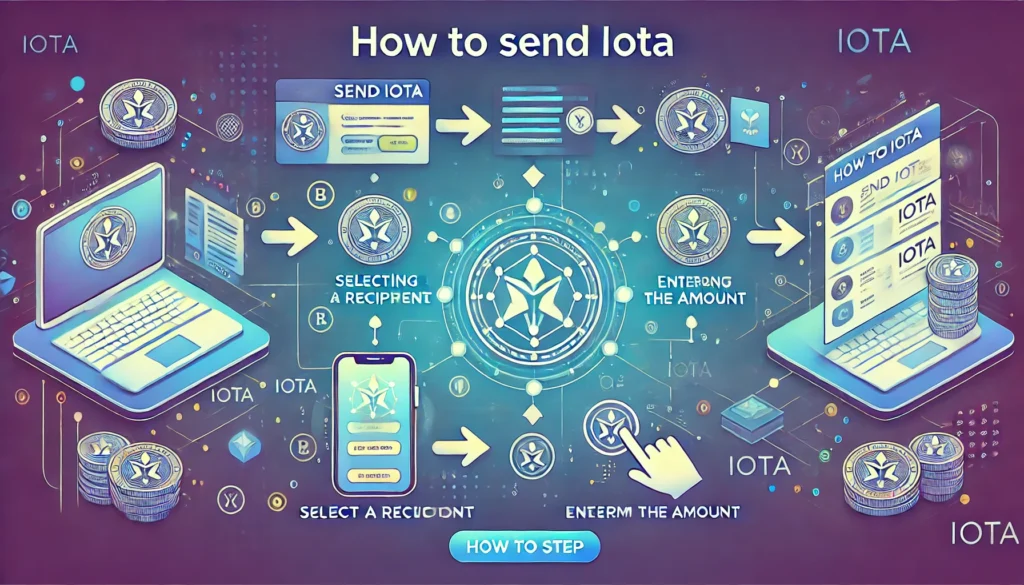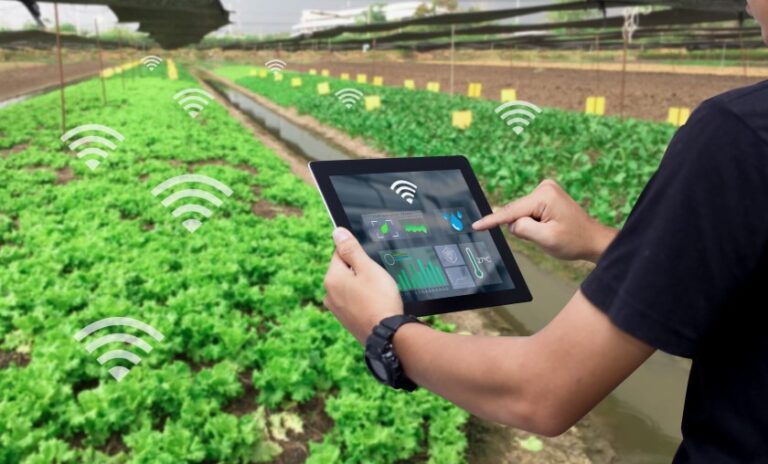Where Can You Send IOTA Too: Revolutionizing IoT Transactions
IOTA is a unique, decentralized cryptocurrency that aims to support secure, feeless transactions within the Internet of Things (IoT) ecosystem. Created specifically to handle microtransactions and data exchanges among devices, IOTA uses a technology called the Tangle—a distributed ledger that differs from traditional blockchains. With its fast and free transactions, IOTA has gained popularity in the IoT world and among individuals looking for an alternative to fee-heavy blockchains.
This guide explores where you can send IOTA, from wallets and exchanges to IoT devices and decentralized applications (dApps). We’ll cover essential security practices and highlight emerging use cases that could shape the future of IOTA transactions.
Choosing the Right IOTA Wallet for Sending IOTA
Before sending IOTA, you need a reliable and secure wallet to store it. Here are some of the best options available:
a. Firefly Wallet
The Firefly Wallet is IOTA’s official wallet, developed and supported by the IOTA Foundation. Firefly is designed for ease of use, even for beginners, and offers all the core functions needed for IOTA transactions—sending, receiving, and staking. It also supports account recovery, with encrypted backups, so you can restore your funds if you lose access.
b. Ledger Nano S and Nano X (Hardware Wallets)
For the highest level of security, hardware wallets like the Ledger Nano S and Nano X are excellent options. By keeping private keys offline, hardware wallets provide significant protection against online hacking. Users can connect their Ledger device with the Firefly Wallet to send and receive IOTA while ensuring their private keys remain safe.
c. Binance Wallet
If you already use Binance for cryptocurrency trading, the integrated Binance wallet allows you to store and transfer IOTA. However, remember that wallets on exchanges are generally less secure than personal or hardware wallets due to the risk of exchange hacks.
d. Trinity Wallet (Legacy)
While now considered a legacy product, the Trinity Wallet was one of IOTA’s earliest official wallets and remains functional for users who have yet to transition to Firefly. However, new users are advised to choose Firefly or a hardware wallet for better security and functionality.
Leading Exchanges Supporting IOTA Transfers
Exchanges play a major role in the IOTA ecosystem, allowing users to trade, send, and receive IOTA globally. Here are some top exchanges supporting IOTA:
a. Binance
Binance is one of the largest cryptocurrency exchanges in the world, known for high liquidity, advanced trading options, and secure storage. Binance’s support for IOTA makes it a popular platform for users who frequently buy, sell, and send IOTA.
b. Bitfinex
Bitfinex was an early adopter of IOTA and has maintained its reputation as a secure, user-friendly platform. It’s particularly popular among experienced traders and those looking for more advanced trading options, including margin trading and lending.
c. Huobi Global
Another prominent exchange, Huobi Global is well-regarded for its advanced security measures and wide selection of cryptocurrencies. Huobi supports IOTA transactions and is a trusted platform for users worldwide.
d. eToro
For beginners, eToro offers a straightforward and social approach to cryptocurrency trading. The platform includes a social trading feature that allows users to mimic the trades of experienced traders, making it easier for newcomers to learn about IOTA trading and transactions.
e. OKEx
OKEx provides a range of trading tools and options for IOTA, making it a versatile choice for more experienced traders. With support for various transaction types and payment methods, OKEx enables users to deposit, send, and withdraw IOTA with ease.
How to Send IOTA: Step-by-Step Instructions

To ensure a successful transaction, here’s a step-by-step guide to sending IOTA:
- Log into your IOTA wallet or exchange account. Make sure you’re using a secure connection.
- Enter the recipient’s address. IOTA addresses are long alphanumeric strings unique to each user’s wallet. Double-check the address carefully; sending to the wrong address could result in a permanent loss of funds.
- Specify the amount you want to send. Be mindful of any platform-specific minimums or maximums that may apply.
- Confirm the transaction details. Carefully review the information entered to ensure accuracy.
- Initiate the transaction and wait for confirmation. IOTA’s Tangle technology usually ensures fast transaction times, but network congestion may occasionally cause delays.
- Verify transaction completion with the recipient. Once confirmed, the recipient should receive the IOTA, completing the transaction.
Security Practices for Safe IOTA Transactions
Security is paramount when dealing with cryptocurrencies, including IOTA. To keep your transactions safe, follow these best practices:
- Use a Secure Wallet: Choose wallets known for their security, such as Firefly or hardware wallets like the Ledger Nano X. Avoid storing significant amounts of IOTA on exchanges unless you are actively trading.
- Enable Two-Factor Authentication (2FA): Most wallets and exchanges, including Firefly and Binance, support 2FA. Enabling it adds an extra layer of security.
- Beware of Phishing Attacks: Be vigilant of phishing attempts, where attackers may try to trick you into providing sensitive information via fake links or emails.
- Update Your Software Regularly: Ensure your wallet software is up to date, as updates often include security patches that protect against potential vulnerabilities.
IoT Devices and IOTA: A Unique Use Case
A groundbreaking use case for IOTA is enabling payments and data exchanges between IoT devices. With the Tangle’s feeless transactions, IOTA can support real-time micropayments between machines without human intervention. Here are some examples:
- Smart City Applications: In smart cities, devices like parking meters, traffic lights, and public transport systems can autonomously transact with each other using IOTA, streamlining urban infrastructure.
- Industrial IoT (IIoT): In industrial environments, IOTA can facilitate data exchanges and micropayments between machines in manufacturing facilities, improving efficiency and cost management.
Peer-to-Peer Payments: Sending IOTA to Friends and Family
Peer-to-peer payments are easy and cost-effective with IOTA, thanks to its zero-fee model. Here’s why it’s a great choice:
- No Transaction Fees: Unlike other cryptocurrencies, IOTA’s fee-free transactions make it perfect for small payments, allowing friends and family to send funds without incurring extra costs.
- Quick Transactions: IOTA’s Tangle network typically processes transactions faster than traditional blockchain networks, ensuring timely peer-to-peer payments.
Using IOTA for Charitable Donations
An increasing number of nonprofit organizations accept IOTA as a donation method. Sending IOTA directly to these organizations supports transparency, as donors can track their contributions on the Tangle ledger. Advantages include:
- Lower Costs: With no intermediary banks or fees, organizations receive the full donation amount.
- Transparency: Donors can verify that their funds have reached the intended organization, adding to IOTA’s appeal for charitable giving.
Sending IOTA to Decentralized Applications (dApps)
The IOTA ecosystem includes a growing number of dApps that accept IOTA payments. Here’s how dApps can utilize IOTA:
- Data Storage and Retrieval: dApps within IOTA’s ecosystem often involve secure data storage and retrieval services, where users can pay for data access using IOTA.
- Smart Contracts (Future Feature): With the planned rollout of IOTA 2.0, smart contracts will allow users to programmatically send IOTA based on specific conditions, opening new use cases in decentralized finance (DeFi).
New Destinations for IOTA: Interoperability and Cross-Platform Transfers
As the blockchain industry trends toward cross-platform compatibility, IOTA may eventually support interoperability with other networks. This development could open up exciting new options for sending IOTA across different blockchain ecosystems, allowing users to:
- Transfer IOTA Across Chains: Future updates may enable seamless transfers of IOTA between networks like Ethereum, Solana, and Polkadot.
- Access Cross-Chain dApps: Interoperability could allow IOTA users to interact with decentralized applications on other networks, enhancing its utility.
Future Trends: Where IOTA May Be Sent in the Coming Years
The rapid growth of IoT suggests that IOTA will expand beyond traditional uses, with potential applications in the following areas:
- Smart Infrastructure Payments: Imagine city infrastructure where traffic lights, electric vehicle charging stations, and energy grids transact autonomously using IOTA for payments.
- Industrial IoT Supply Chains: Manufacturers may soon implement IOTA to track goods, manage inventory, and process micropayments across global supply chains.
- Consumer Micropayments: With devices increasingly able to transact autonomously, IOTA could support tiny, automated payments for Wi-Fi access, digital content, and IoT services.
Conclusion: Exploring All the Places You Can Send IOTA
From traditional wallets and exchanges to advanced IoT applications, the options for sending IOTA are varied and continuously evolving. By following security best practices and keeping an eye on emerging trends, you can safely explore all the possibilities IOTA offers. As the IoT and blockchain sectors grow, understanding where and how to send IOTA will empower you to participate fully in the interconnected future.





